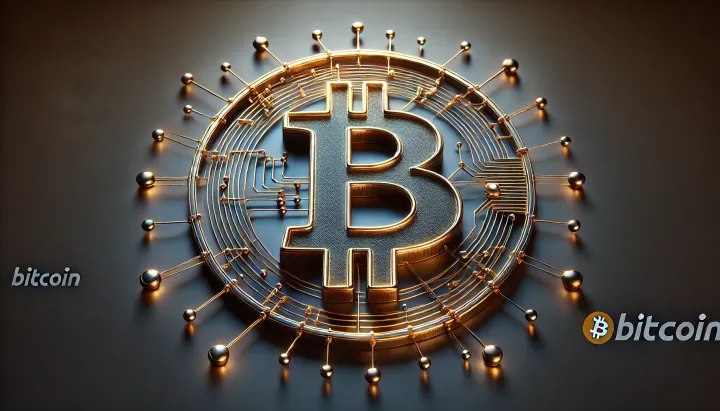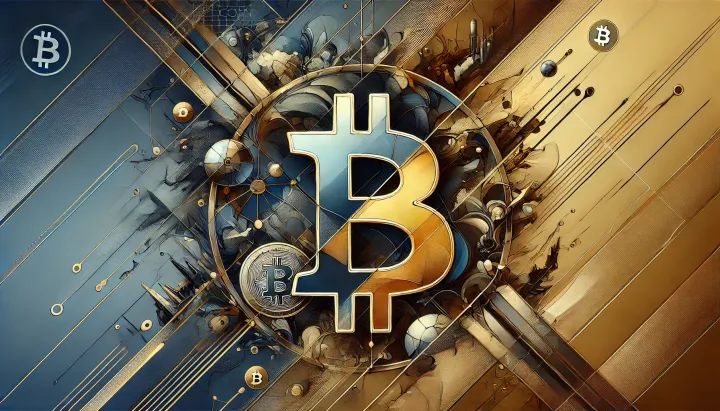Strategic Bitcoin Reserves and the U.S. Fiscal Reset
The April 27, 2025 episode of the Robin Seyr Podcast features TCB outlining how a Strategic Bitcoin Reserve could help the United States escape a $2.8 trillion deficit spiral.

- My 'briefing notes' summarize the content of podcast episodes; they do not reflect my own views.
- They contain (1) a summary of podcast content, (2) potential information gaps, and (3) some speculative views on wider Bitcoin implications.
- Pay attention to broadcast dates (I often summarize older episodes)
- Some episodes I summarize may be sponsored: don't trust, verify, if the information you are looking for is to be used for decision-making.
Summary
The April 27, 2025 episode of the Robin Seyr Podcast features TCB outlining how a Strategic Bitcoin Reserve could help the United States escape a $2.8 trillion deficit spiral. He argues that first-mover accumulation confers durable geopolitical leverage while tariff financing and dollar-stablecoin demand buy time for a hard-money transition. The discussion presents Bitcoin as an extension of American ideals of life, liberty, and property that curtails state overreach.
Take-Home Messages
- Debt Crisis: A $2.8 trillion annual deficit demands drastic monetary innovation, not incremental policy tweaks.
- First-Mover Advantage: The nation that amasses Bitcoin earliest secures lasting leverage in the emerging monetary network.
- Tariff Revival: Replacing income tax with reciprocal tariffs aims to fund government without perpetual debasement.
- Stablecoin Demand: Dollar-pegged stablecoins could become indispensable Treasury buyers, sustaining bond liquidity.
- Sovereignty Merge: Self-custodied Bitcoin fuses personal and economic freedom, limiting future confiscation attempts.
Overview
TCB opens by labeling rapid deficit growth the greatest risk to U.S. stability and recounts how graduate research on debt dynamics primed him for Bitcoin’s importance. He notes that national-security discourse still overemphasizes terrorism while ignoring fiscal arithmetic. This framing shifts attention from external threats to homegrown imbalances.
He argues that Bitcoin offers a mathematically enforced exit from monetary manipulation, likening adoption to cows escaping a pasture and widening the breach for others. Early moves by El Salvador and Bhutan prove feasibility, but a G7 entrant would reset global power. TCB insists the United States must seize that role or risk strategic subordination.
The proposed Strategic Bitcoin Reserve would purchase and lock coins for twenty years, letting appreciation retire sovereign debt. Parallel growth in dollar stablecoins would channel global demand back into Treasuries, offsetting foreign divestment. He claims this pairing of hard money and dollar liquidity reconciles domestic solvency with international influence.
Reviving nineteenth-century tariff financing would further distance fiscal capacity from Federal Reserve credit creation. TCB contends that free-market interest rates would then discipline capital allocation, ending passive asset bubbles fed by cheap debt. Hard money, he concludes, forces both citizens and institutions to value efficient production over speculation.
Stakeholder Perspectives
- Federal policymakers – Seek debt-reduction tools that avoid social unrest.
- Federal Reserve officials – Fear erosion of policy levers yet eye stablecoin flows to support bond markets.
- Multinational corporations – Evaluate treasury-allocation shifts after MicroStrategy’s first-mover success.
- Retail savers – Regain purchasing-power protection but need accessible self-custody tools.
- Trade partners – Weigh retaliation versus reciprocal tariff cuts if U.S. revenue pivots to border duties.
Implications and Future Outlook
If Washington anchors reserves in Bitcoin, bond investors will rapidly reassess sovereign risk, potentially bidding down dollar yields as perceived backing strengthens. Late-adopting governments would scramble to secure coin allocations, intensifying geopolitical competition. Coordinated accumulation caps could surface yet prove unenforceable.
Hard-money discipline would pressure Congress to reform entitlements and shrink discretionary spending, shifting emphasis to productivity-led growth. Tariff reciprocity could de-escalate trade tensions, but mis-calibrated rates risk import shocks and consumer backlash. Stablecoin regulations will need to balance Treasury demand with systemic-risk safeguards.
Conversely, heavy-handed attempts to regulate private keys could ignite civil-liberty battles and drive adoption offshore. Jurisdictions that embrace property-rights protections may attract high-value human capital and Bitcoin liquidity. The resulting policy divergence will shape whether Bitcoin reinforces democratic norms or accelerates monetary fragmentation.
Some Key Information Gaps
- What policies allow a nation to build a dominant Bitcoin position without destabilizing markets? Understanding accumulation pathways guides prudent execution and limits global backlash.
- How can the United States curb its debt spiral without triggering social unrest? Viable strategies must safeguard public services while restoring fiscal credibility.
- How will regulators balance civil liberties with security concerns over private keys? Outcomes determine whether Bitcoin strengthens or weakens democratic principles.
- Which stablecoin rules align issuer incentives with sustained Treasury demand? Robust frameworks could preserve dollar liquidity while mitigating systemic risk.
- How will interest-rate discovery function when lending relies strictly on savings? Clarifying this mechanism informs banking-sector adaptation and macroeconomic modeling.
Broader Implications for Bitcoin
Monetary Sovereignty Recast
A large-scale U.S. Bitcoin reserve would challenge the dollar’s fiat foundation and prompt hybrid reserve strategies worldwide. Central banks might blend Bitcoin with gold and foreign exchange to hedge fiscal shocks. This shift could reorder capital flows and dilute legacy seigniorage benefits.
Decentralized Capital Allocation
Free-market rates under hard money would punish inefficient leverage and reward productive enterprise. Venture funding could move from passive index flows to targeted equity stakes backed by real savings. Over time, industrial policy may pivot toward tangible output instead of financial engineering.
Civil-Liberty Renaissance
When citizens “become their money,” confiscation becomes politically costly, pressuring governments to win consent rather than coerce compliance. Enhanced privacy norms could spill into adjacent domains like data protection and speech. Legal systems may evolve toward stronger individual-rights guarantees to remain competitive for mobile capital.
Trade-Policy Realignment
Reciprocal tariffs aimed at funding government without income taxes could catalyze a global race to zero as nations seek cost advantages. If successful, border duties might shrink after initial adjustment, yielding more open commerce than today’s mixed regime. Failure, however, risks tit-for-tat barriers and renewed fragmentation.



Comments ()